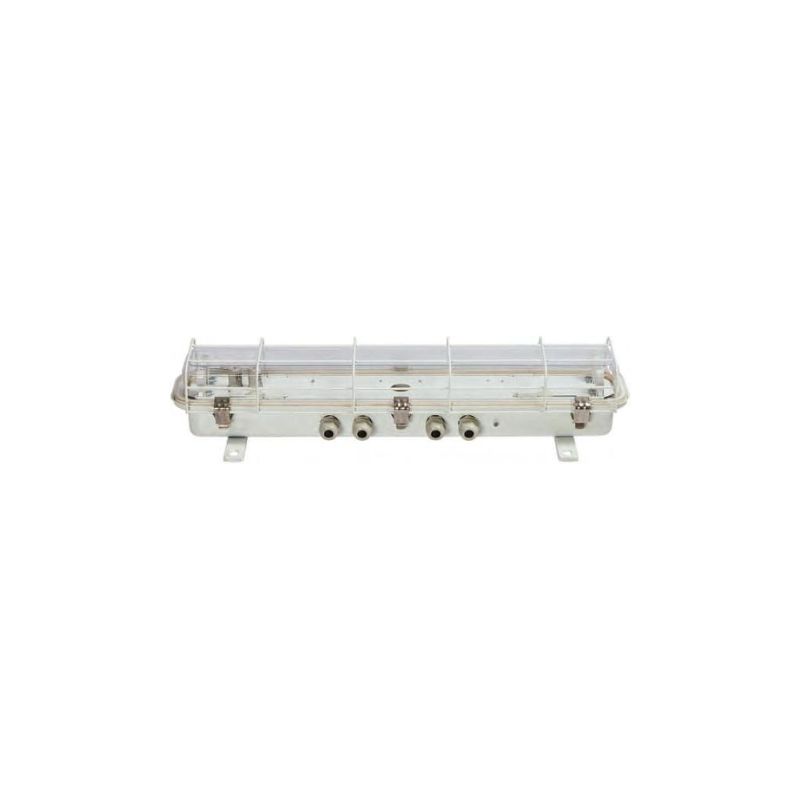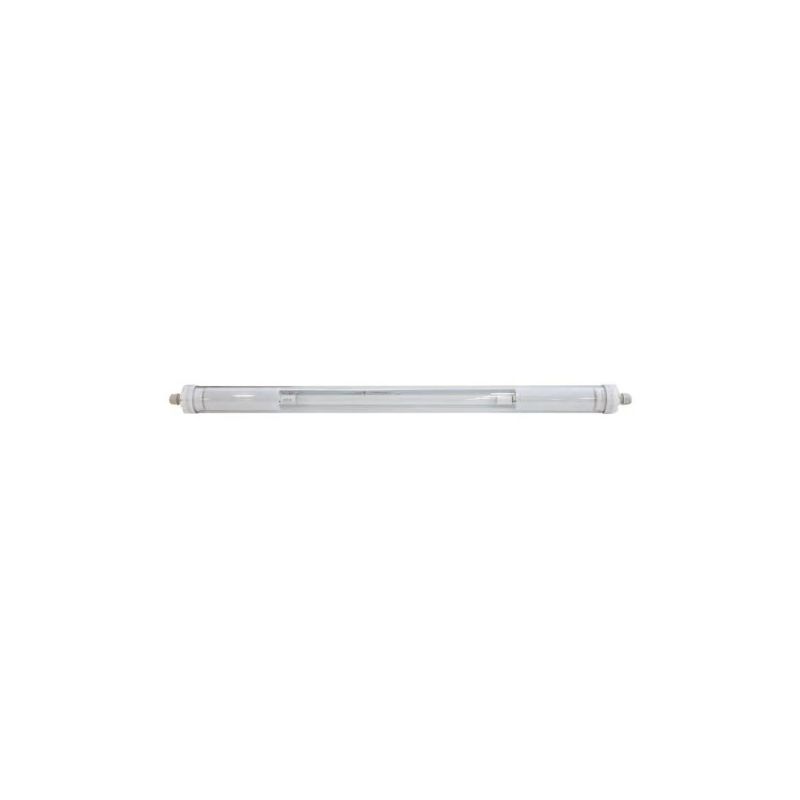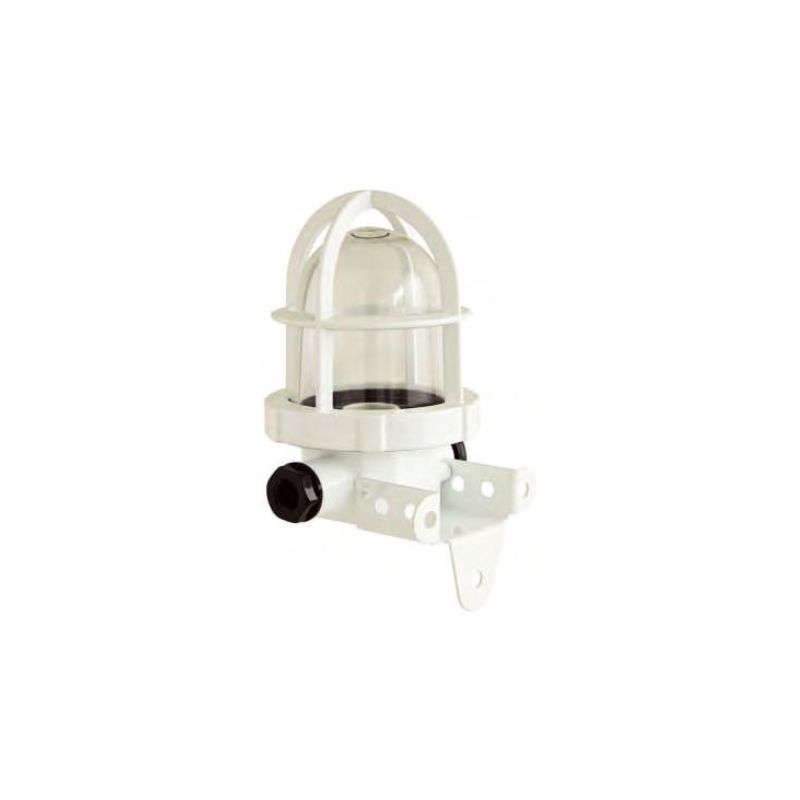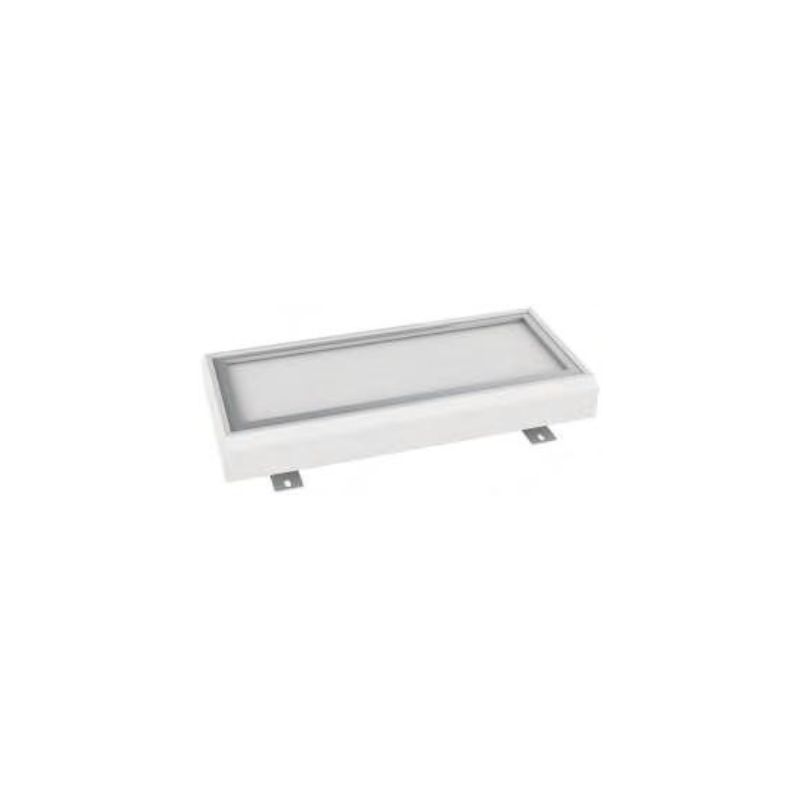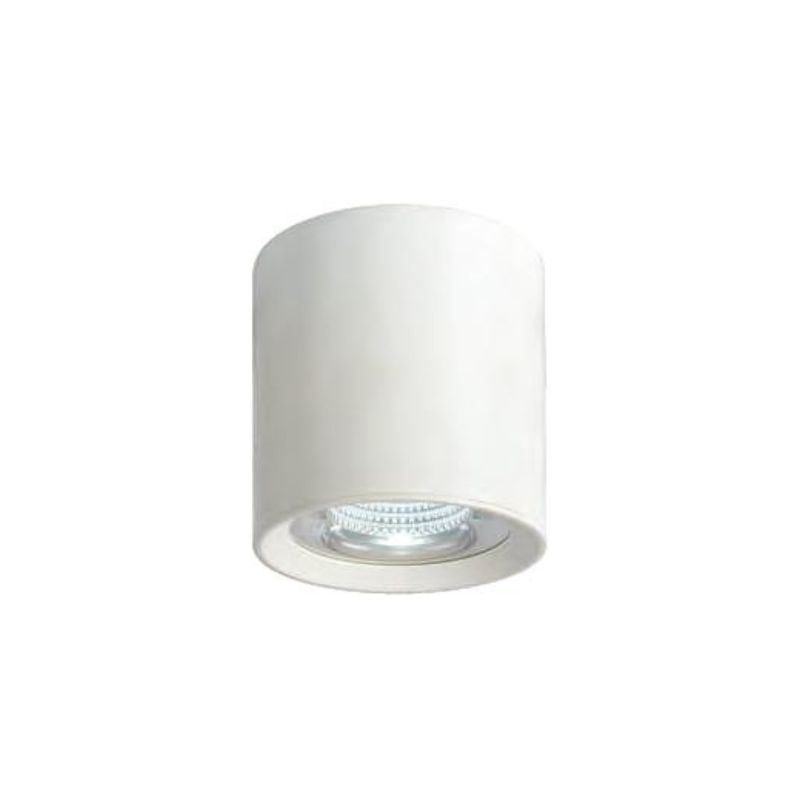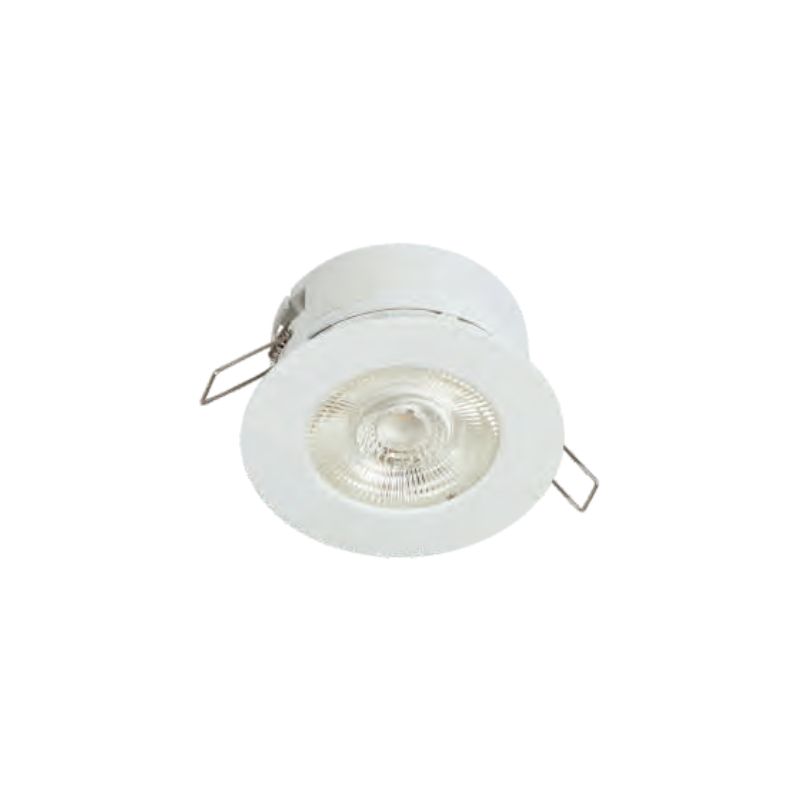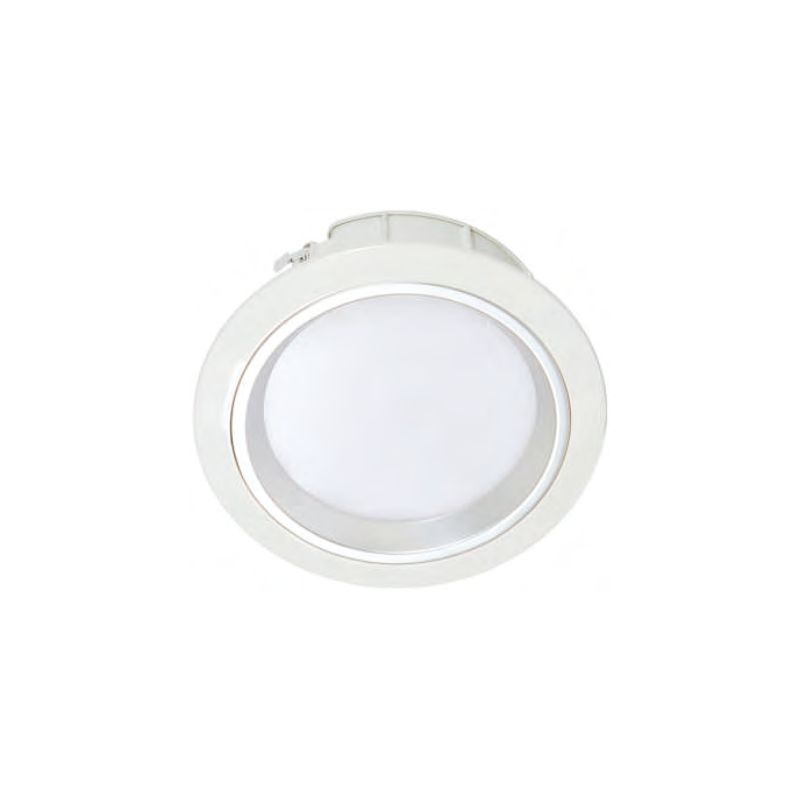Reasons to Choose LED Cabin Light for Cruise Ship
Table of Contents
Today’s cruise ship design treats marine cabin lighting as an essential part of the vacation experience rather than just a practical necessity. Since these cozy quarters are where guests unwind, dine, and sleep, the way the room is lit plays a vital role in comfort, security, and the lasting memory of the trip. LED technology has taken the lead in marine lighting. Against older incandescent and fluorescent bulbs, LED cabin lights shine for years longer, pull far less power, and tick every box cruise operators care about, from strict safety regulations and eco-certifications to the soft, adjustable brightness that helps guests move from sun-soaked decks to the cozy calm of night.
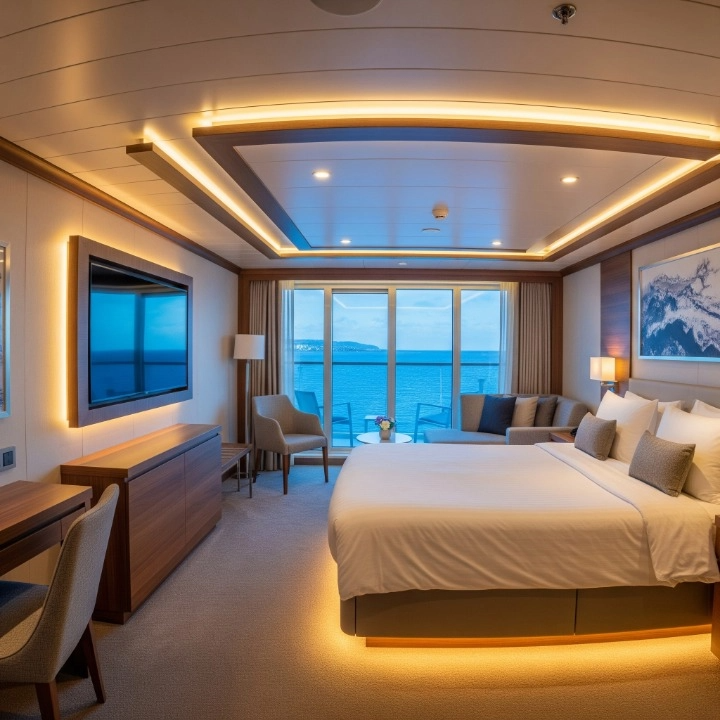
Advantages of LED Marine Cabin Lights
Energy Consumption and Operating Costs
Cruise ships operate like floating cities, blasting through the ocean on power alone. A big chunk of their daily energy consumption goes to lighting. Cabins, corridors, and public spots like lounges and theaters are always lit-mostly with older, power-hungry bulbs. Incandescent and fluorescent lights waste energy and shower the ships with extra heat, which the air-conditioning has to fight. LED cabin lights are the smarter pick: they sip less energy, last years longer, and waste hardly any heat, making them a must-have for new ships.
Think of a real-life number to drive the point home. Say we have a big cruise ship loaded with 5,000 lights in guest cabins and corridors. Right now, they’re running 20-watt compact fluorescent bulbs. Change to 8-watt LEDs, and the lights stay on for 18 hours a day. Let’s see how the numbers shake out:
| Item | Calculation | Result |
| Power difference per lamp | 20W – 8W | 12W (0.012 kW) |
| Daily energy saved per lamp | 0.012 kW × 18 hours | 0.216 kWh/day |
| Annual energy saved per lamp | 0.216 kWh × 365 days | 78.84 kWh/year |
| Annual energy saved (5,000 lamps) | 78.84 kWh × 5,000 | 394,200 kWh/year |
| Annual cost savings (at $0.30/kWh) | 394,200 × 0.30 | $118,260/year |
Upgrading cabin and corridor lighting to LEDs can save over $110,000 annually in electricity, not including additional savings from reduced air conditioning demand. Including other areas like dining halls, entertainment venues, and theaters would increase these savings even further.
At the same time, LEDs bring additional advantages when compared with traditional light sources:
| Lighting Type | Power Consumption per Bulb (W) | Average Lifespan (hours) | Energy Saved (%) |
| Incandescent Bulb | 60 W | 1,000 | – |
| Fluorescent Bulb | 15 W | 8,000 | 75% |
| LED Bulb | 8 W | 50,000 | 87% |
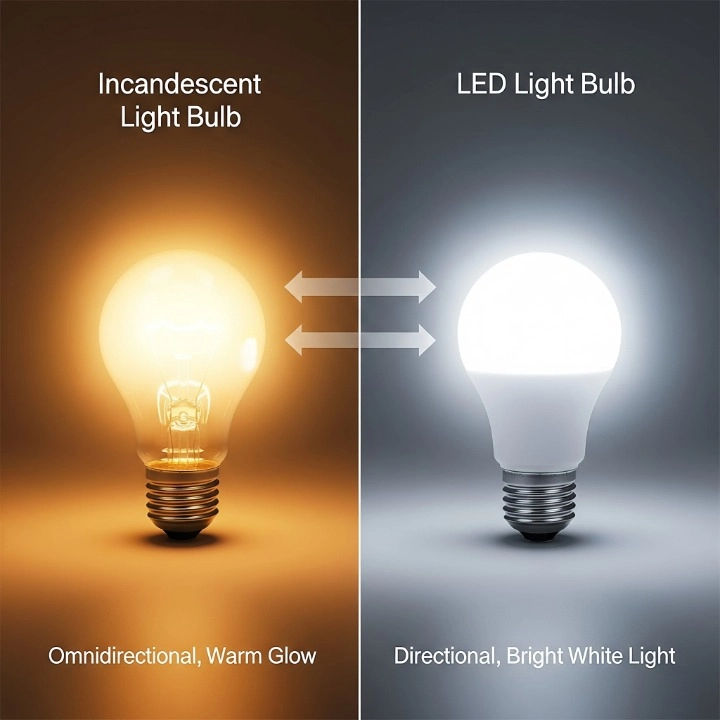
As shown in the table above, LEDs consume nearly 87% less energy than traditional incandescent bulbs and around 50% less than fluorescent lamps. Combined with their extremely long lifespan, LEDs not only reduce replacement costs and labor but also lower the strain on onboard power systems, improving the overall reliability of cruise ship operations.
Extended Lifespan
Cruise marine cabin lighting operates almost 24/7, so replacing short-lived bulbs isn’t just pricey—it also costs time, which crew members could spend on safety checks and guest service. While the old-style incandescent and fluorescent lights last 2,000 and 10,000 hours, respectively, the latest LED fittings easily stretch between 30,000 and 50,000 hours. For a vessel that stays at sea for months on end, that extra life means far fewer service trips, smaller stock of spare parts, and more hours back in the hands of the crew for the things that really matter.
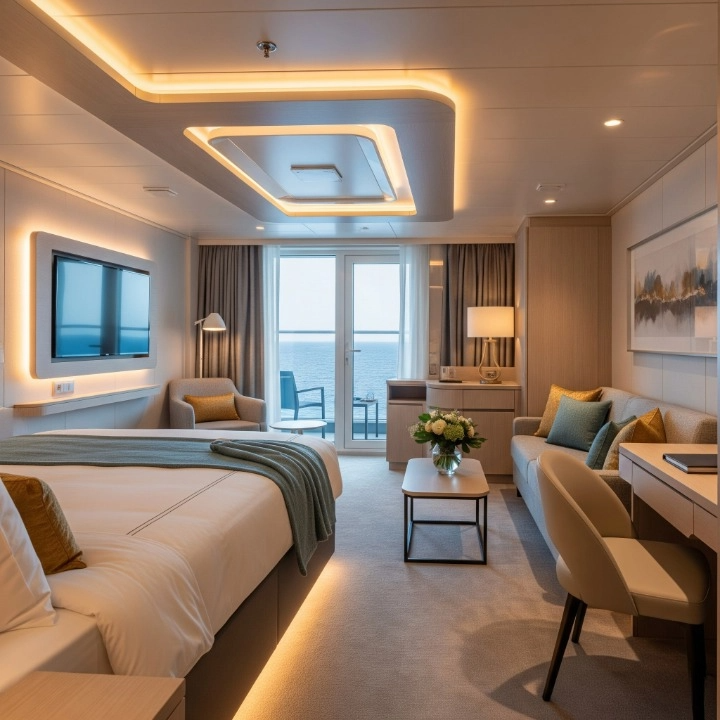
Light Environment and Passenger Experience
Beyond saving energy and lasting longer, cruise ship lighting is all about making every guest feel at home. Cabins, while cozy, can heat up quickly when traditional bulbs are used. Standard incandescent or halogen bulbs pump out heat, making air conditioning work even harder. LEDs, in contrast, run cool, leaving the air at a pleasant temperature. That temperature control not only cuts energy costs, it keeps guests comfortable. Plus, LEDs excel at rendering colors accurately and can shift in tone depending on the setting. A warm white hue at night invites relaxation, while a brighter, cooler tone is spot-on for reading or quizzing the cruise director on excursion details. Carnival ships and, for that matter, major competitors use smart systems that can change cabin lighting automatically for breakfast, sunset, or movie-on-the-balcony time. When every corner—including the tiny headboard lamps and shower night-light—responds to schedule and task, the cabin feels uniquely tailored. That touch of personalization is the defining luxury of ocean travel today.
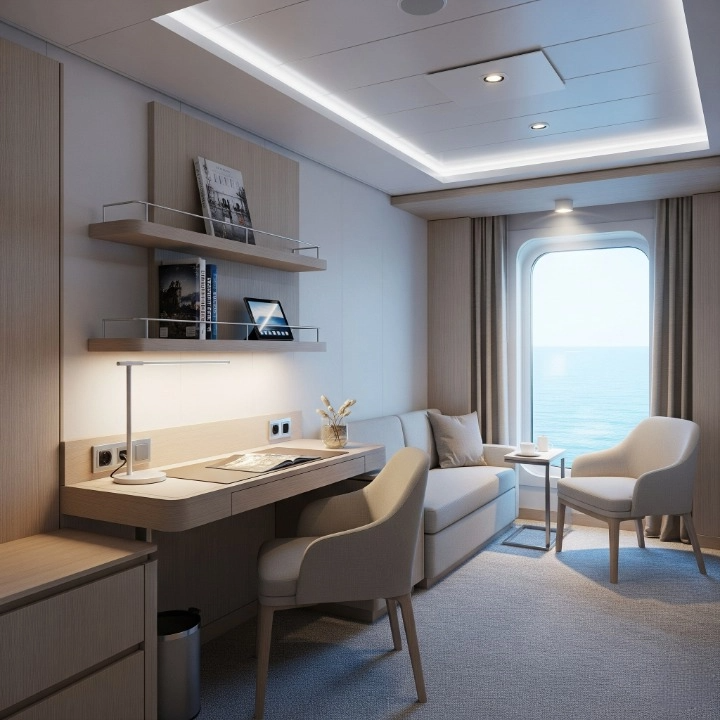
Adapting to the Ship’s Environment
When a cruise ship is at sea, marine cabin lighting must withstand multiple challenges, including humidity, salt spray, and vibration. Compared to fragile traditional light sources, LED cabin lighting is easier to design and is waterproof, corrosion-resistant, and vibration-resistant. By using corrosion-resistant materials and carefully designed heat dissipation structures, LED lamps can maintain stable operation in extreme environments. Many professional marine cabin lighting products have also been certified by classification societies, ensuring long-term and reliable operation even in harsh environments. This not only ensures the continuity of the lighting itself, but also enhances the safety and reliability of the entire ship..
Environmental Benefits and Sustainability
Cruise companies are under growing pressure to reduce their environmental impact. By choosing LED cabin lighting, they not only save fuel but also cut CO₂ emissions significantly. For example, replacing 5,000 incandescent bulbs with LEDs could save:
| Parameter | Incandescent | LED Equivalent | Annual Savings |
| Total Power (kW) | 300 kW | 50 kW | 250 kW |
| Energy Use (per year) | 2,628,000 kWh | 438,000 kWh | 2,190,000 kWh |
| CO₂ Emissions* | ~1,850 tons | ~308 tons | ~1,542 tons |
(*Based on 0.7 kg CO₂ per kWh, a commonly used conversion factor.)
This level of savings demonstrates why LEDs are not only a financial decision but also a sustainability commitment.
Compared with Traditional Light Sources
| Dimension | Incandescent/Halogen | Fluorescent/Compact CFL | Metal Halide/High-Intensity Discharge | LED (Marine Grade) |
| Typical Luminous Efficacy (lm/W) | 10–20 | 50–80 | 70–110 | 100–160 |
| Rated Lifetime | 1k–2k h | 5k–10k h | 6k–15k h | 30k–50k h (L70) |
| Flicker/Startup | No flicker but high energy use | May flicker; poor performance in low temperature/frequent on-off | Slow warm-up; not suitable for frequent switching | Instant-on, flicker-free possible |
| Dimming/Color Control | Poor | Limited | Difficult | Excellent (DALI/DMX/ tunable white) |
| Maintenance Cost | High | Medium | High | Low |
| Heat Emission | High | Medium | Medium | Low |
| Environmental Impact | No mercury but low efficiency | Contains mercury | Contains metal halides | Mercury-free, recyclable |
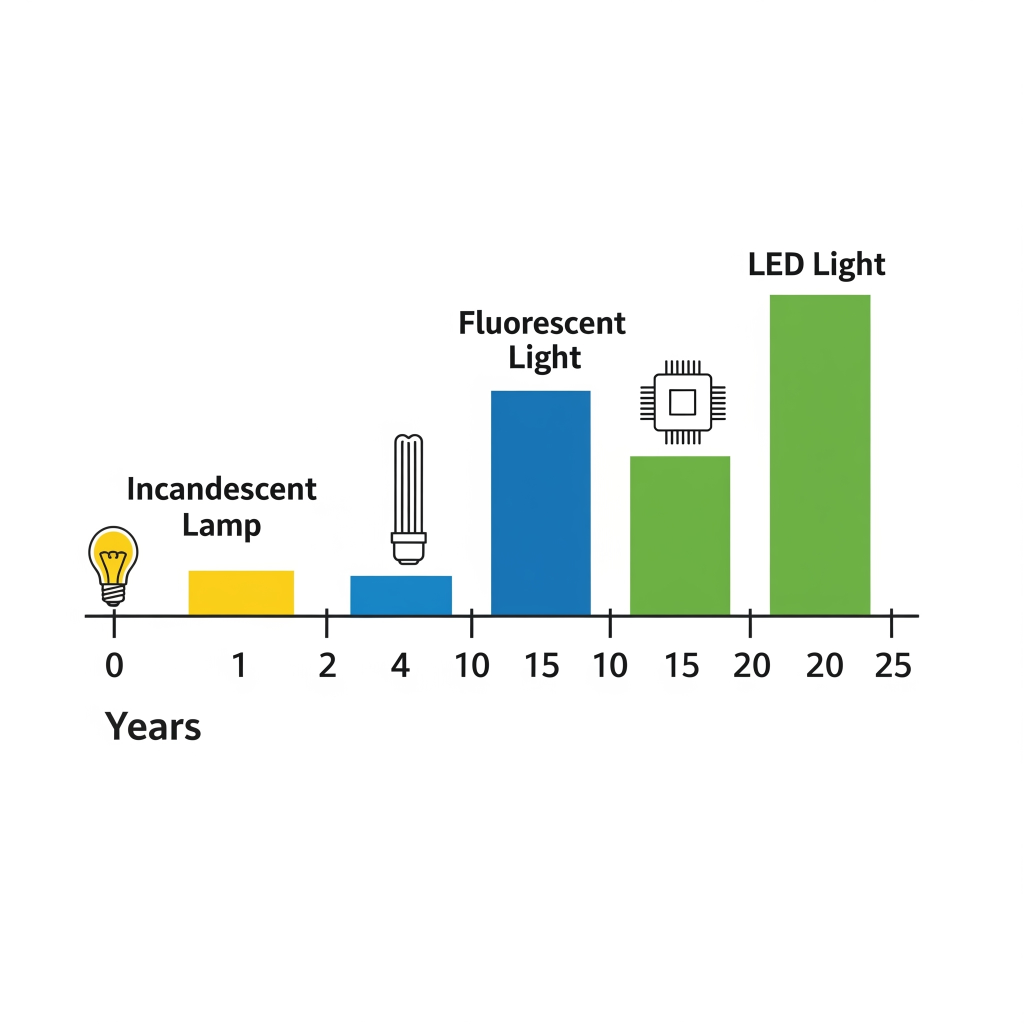
Recommendations for illumination and lighting distribution
Shipping companies and design institutes usually provide more detailed project standards. The following is a common range of experience:
- Cabins/living areas: General illumination 150–300 lx; reading areas 300–500 lx; nightlight ≤ 5 lx.
- Corridors/elevator halls: 100–200 lx, with an emphasis on uniform illumination and low glare.
- Dining/leisure areas: 200–300 lx with accent lighting, prioritizing color rendering.
- Backstage/work areas: 300–500 lx, prioritizing durability and easy maintenance.
- Theaters/show venues: Moderate basic illumination, with emphasis on stage lighting and scene-based control; smooth transitions between anti-glare and dark scenes are required.
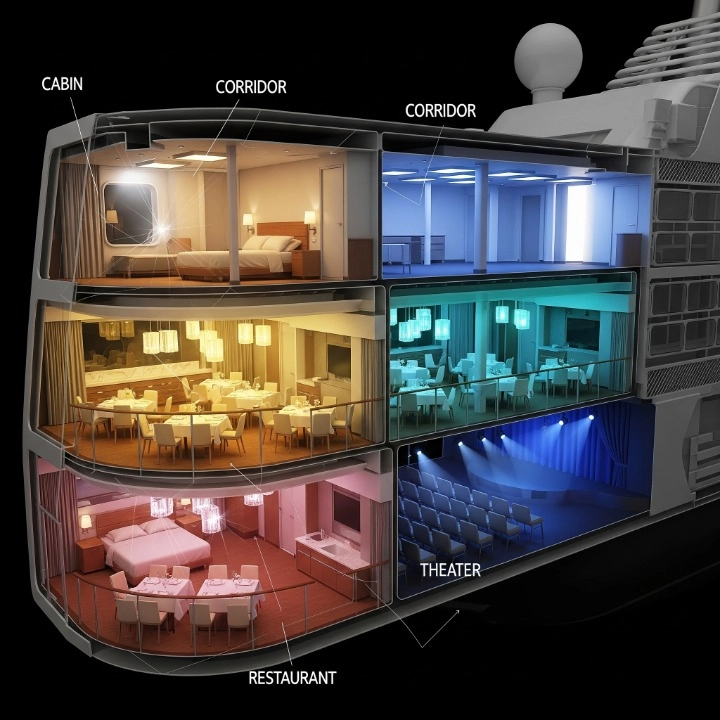
For cruise ship lighting, corridors benefit from linear fixtures that provide uniform light distribution. Cabins should use recessed or louvered lights with wide beam angles to minimize direct glare. For metallic or mirrored surfaces, diffusers or wall/ceiling wash reflections help prevent bright spots and uneven highlights.
Ensuring Compliance and Reliability in Marine Lighting
When selecting lighting for ships and offshore facilities, it is essential to meet marine and classification society standards. Choose fixtures and drivers tested for EMC, vibration, and salt spray to ensure long-term stability in humid, corrosive, and motion-prone environments. Electrical requirements typically include PF ≥0.9 and THD ≤15% to minimize reactive power and harmonic pollution, with surge protection recommended at 2–4 kV depending on installation location. Fire safety and emergency performance must comply with regulations for emergency lighting duration and switching, prioritizing visibility in corridors, stairways, and assembly points. Documentation and traceability—including material specifications, photometric files (IES/LDT), consistency reports, and installation instructions—are essential for inspection and project delivery.
Conclusion
From every perspective—technical, economic, environmental, and experiential—LEDs are the definitive choice for cruise ship cabin lighting. They provide unmatched energy efficiency, enhance passenger comfort, improve safety standards, and contribute to long-term sustainability. In a time when the cruise industry faces rising operational costs and growing environmental expectations, LEDs stand out as the smart, reliable, and forward-looking solution.
As cruise operators continue to invest in passenger experience and sustainable practices, LED cabin lighting is no longer optional—it is the new standard that defines the future of maritime hospitality.

